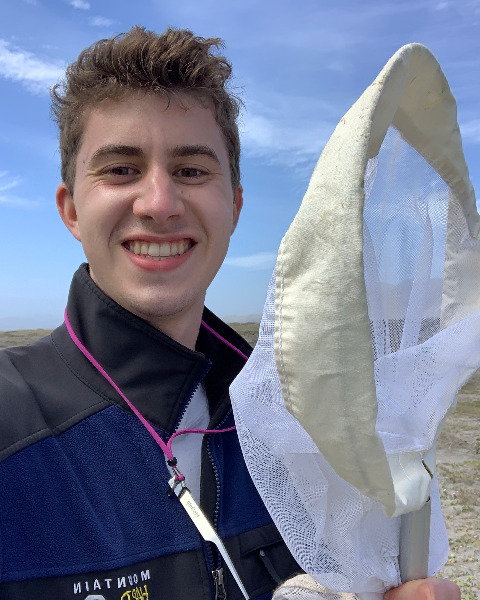Systematics, Evolution, and Biodiversity
Student Competition 10-Minute Paper
Undergrad MUVE and SysEB: Miscellaneous
Identifying species and detecting population variation using geometric morphometrics in Halictus (Hymenoptera: Halictidae) bees
Monday, November 1, 2021
8:48 AM - 9:00 AM MT
Location: Colorado Convention Center, Meeting Room 301-303

Charles N. Thrift
Undergraduate Student
University of California
Goleta, California
Katja C. Seltmann
University of California
Santa Barbara, California
Presenting Author(s)
Co-Author(s)
Wing venation can be used to accurately identify bees (Hymenoptera: Anthophila) to species. Wing venation patterns alone, captured by geometric morphometrics, may also be sufficient to classify variation between populations of the same species. An application of this method is presented here with bees in the genus Halictus (Hymenoptera: Halictidae). Specimens were collected from Santa Cruz Island and Santa Barbara, California, a coastal mainland town. Santa Cruz Island is a 35-kilometer long island about 32 kilometers off the coast of Santa Barbara in the Pacific Ocean, which creates a physical barrier between the mainland and island populations. The genus Halictus is a cosmopolitan genus, with 6 species recorded in the Santa Barbara mainland and Santa Cruz Island study system. To analyze wing venation patterns, forewings were removed, slide mounted, imaged, and annotated with digital landmarks using TPS morphometric software for approximately 360 specimens and 9 landmarks. The entirety of this project was conducted remotely during the COVID-19 pandemic with inexpensive equipment. Results show successful discrimination of three Halictus species, and differentiation with some caveats of two populations of one species, H. tripartitus, collected either from mainland or island locations.


